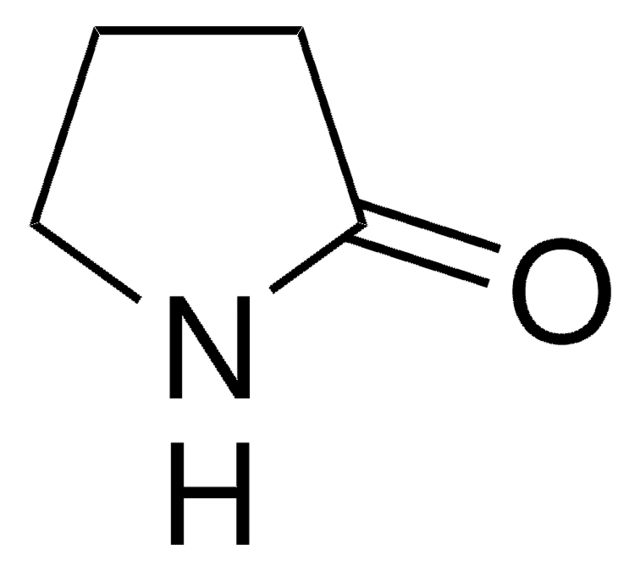Y0000793
Vinyl acetate
European Pharmacopoeia (EP) Reference Standard
Sinónimos:
Acetoxyethylene
About This Item
Productos recomendados
grado
pharmaceutical primary standard
densidad de vapor
3 (vs air)
presión de vapor
88 mmHg ( 20 °C)
familia API
vinyl acetate
temp. de autoignición
801 °F
lim. expl.
13.4 %
fabricante / nombre comercial
EDQM
índice de refracción
n20/D 1.395 (lit.)
bp
72-73 °C (lit.)
mp
−93 °C (lit.)
densidad
0.934 g/mL at 25 °C (lit.)
aplicaciones
pharmaceutical (small molecule)
formato
neat
temp. de almacenamiento
2-8°C
cadena SMILES
CC(=O)OC=C
InChI
1S/C4H6O2/c1-3-6-4(2)5/h3H,1H2,2H3
Clave InChI
XTXRWKRVRITETP-UHFFFAOYSA-N
¿Está buscando productos similares? Visita Guía de comparación de productos
Descripción general
Aplicación
Envase
Otras notas
Palabra de señalización
Danger
Frases de peligro
Consejos de prudencia
Clasificaciones de peligro
Acute Tox. 4 Inhalation - Aquatic Chronic 3 - Carc. 2 - Flam. Liq. 2 - STOT SE 3
Órganos de actuación
Respiratory system
Código de clase de almacenamiento
3 - Flammable liquids
Clase de riesgo para el agua (WGK)
WGK 2
Punto de inflamabilidad (°F)
17.6 °F - closed cup
Punto de inflamabilidad (°C)
-8 °C - closed cup
Elija entre una de las versiones más recientes:
Certificados de análisis (COA)
Lo sentimos, en este momento no disponemos de COAs para este producto en línea.
Si necesita más asistencia, póngase en contacto con Atención al cliente
¿Ya tiene este producto?
Encuentre la documentación para los productos que ha comprado recientemente en la Biblioteca de documentos.
Los clientes también vieron
Nuestro equipo de científicos tiene experiencia en todas las áreas de investigación: Ciencias de la vida, Ciencia de los materiales, Síntesis química, Cromatografía, Analítica y muchas otras.
Póngase en contacto con el Servicio técnico



